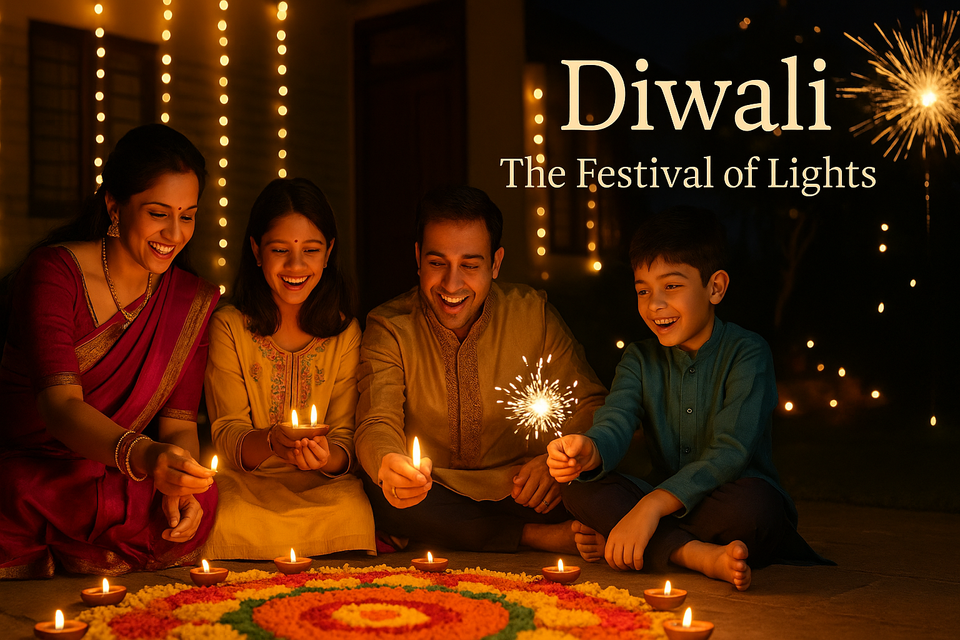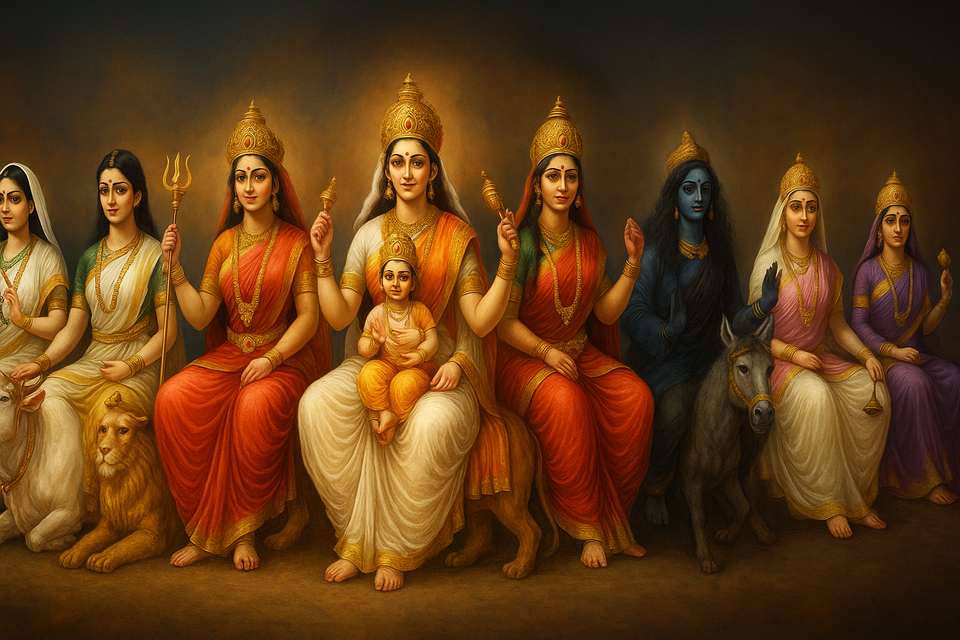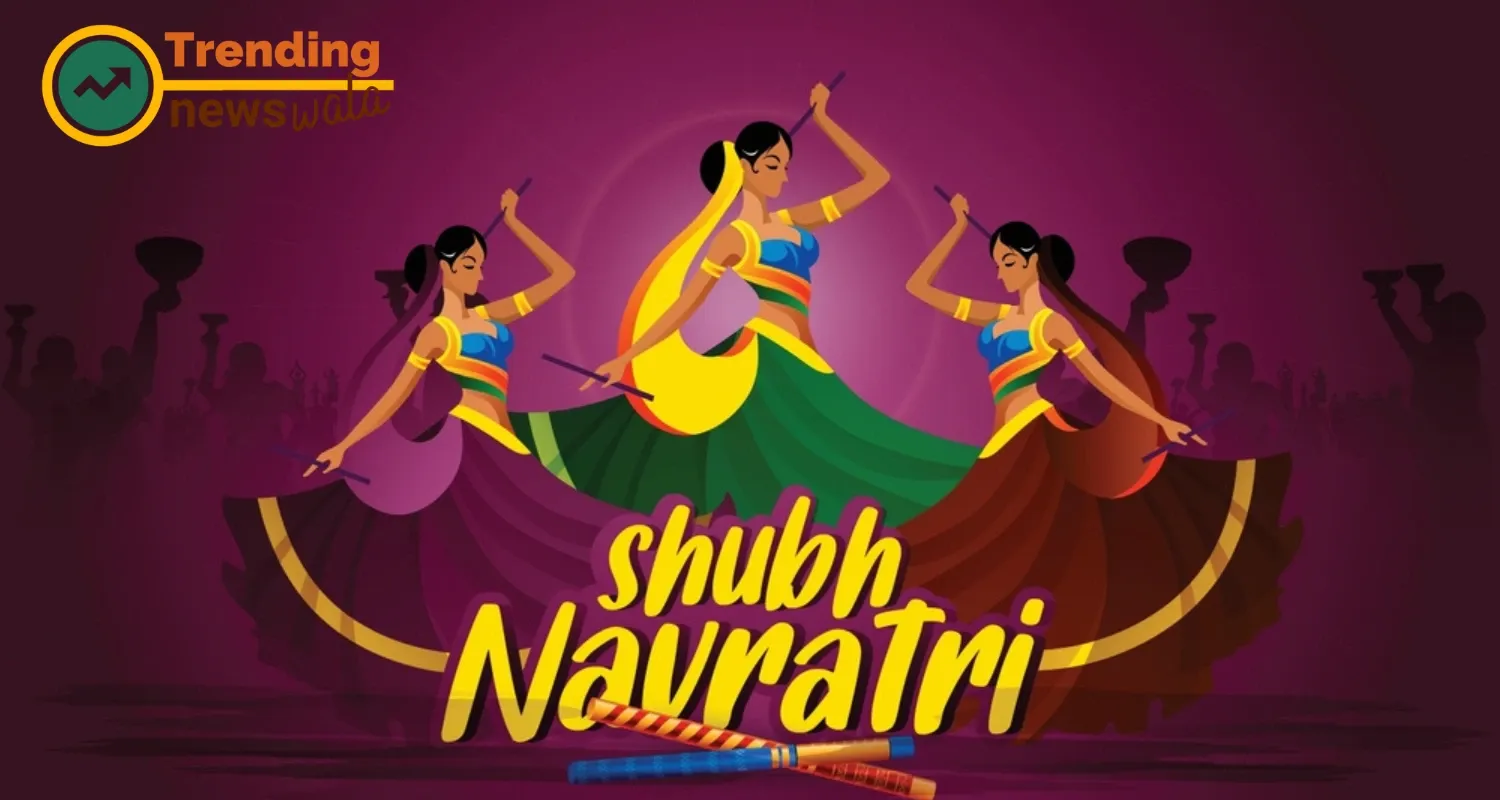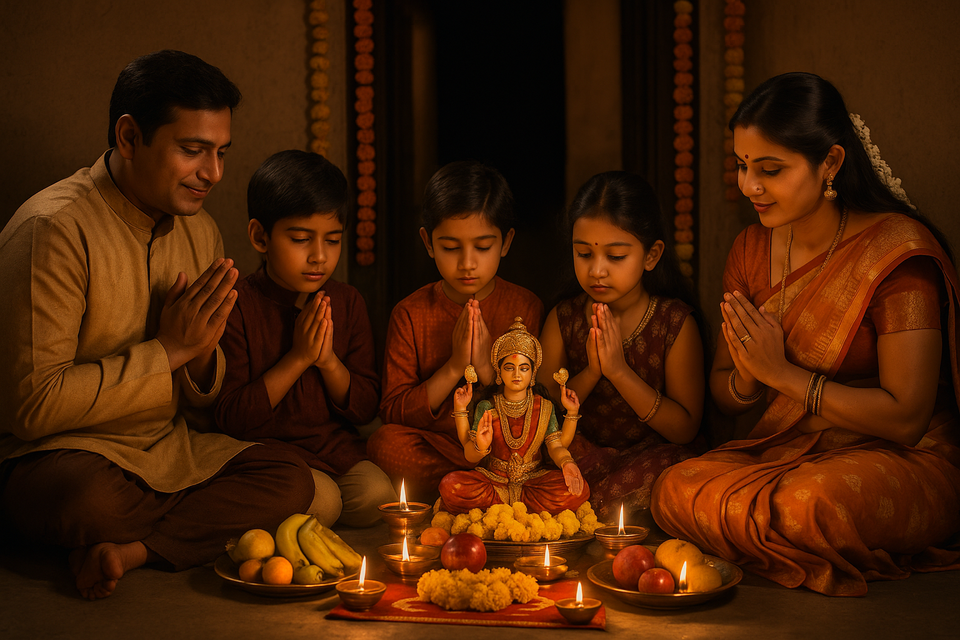Onam: The Grand Festival of Kerala 🌸 | Meaning, History, Traditions, and Celebrations
Onam, the joyous harvest festival of Kerala, unites communities in colorful festivities, feasts, and cultural performances, celebrating the spirit of abundance and unity.
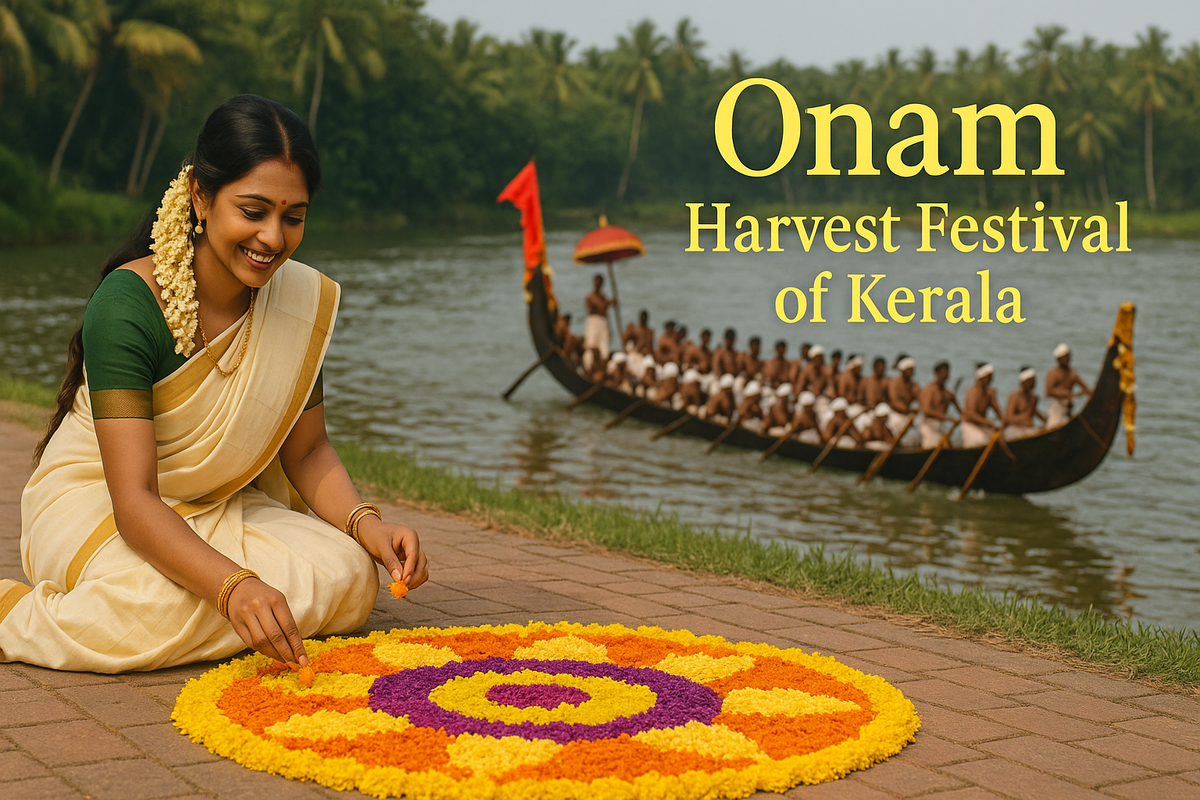
Onam is one of the most cherished and vibrant festivals of India, celebrated predominantly in the state of Kerala with immense enthusiasm and grandeur. 🌟 It is a harvest festival that welcomes the spirit of King Mahabali, whose reign is considered Kerala's golden era. Beyond being a harvest festival, Onam is a celebration of unity, prosperity, and cultural richness.
If you're exploring the most fascinating Ancient Festivals of India, Onam undoubtedly tops the list, representing a perfect blend of mythological stories and vibrant traditions!
🧿 The Mythology Behind Onam
The story of Onam revolves around the legendary demon king Mahabali, known for his generosity, compassion, and dedication to his people. According to Hindu mythology, the gods grew jealous of his popularity and approached Lord Vishnu for help. Vishnu took his Vamana avatar (dwarf Brahmin) and asked Mahabali for land equal to three steps. The king agreed, and Vamana covered the earth and the sky in two steps, with the third step placed on Mahabali’s head, pushing him to the netherworld.
However, due to his righteousness, Mahabali was granted permission to visit his beloved people once a year. This visit is celebrated as Onam! 🌟
🌻 When is Onam Celebrated?
Onam falls in the month of Chingam (August-September) as per the Malayalam calendar. The celebrations typically last for 10 days, culminating with Thiruvonam, the most significant day of the festival.
The 10-day celebration beautifully aligns with the spirit of festivals like Raksha Bandhan, where traditions and emotions weave deep bonds.
🌸 How Onam is Celebrated: Traditions and Rituals
1. 🌼 Pookalam (Flower Rangoli)
Homes are adorned with intricate floral designs called Pookalam, symbolizing happiness and prosperity.
2. 🍛 Onasadya (Traditional Feast)
A grand vegetarian meal with over 25 dishes, served on banana leaves. Dishes like avial, sambar, thoran, and payasam are prepared with love.
3. 🚣 Vallam Kali (Boat Race)
The spectacular snake boat races are a visual treat where teams row their Chundan Vallams in sync with rhythmic songs.
4. 🎭 Pulikali (Tiger Dance)
Artists paint themselves like tigers and hunters, and dance energetically to traditional beats.
5. 🛕 Special Prayers and Rituals
Temples host special prayers, and families gather to seek blessings for prosperity.
✨ The 10 Days of Onam Celebrations
| Day | Name | Significance |
|---|---|---|
| 1 | Atham | Beginning of Pookalam |
| 2 | Chithira | Adding more flowers to Pookalam |
| 3 | Chodhi | Shopping for festival |
| 4 | Vishakam | Beginning of feast preparations |
| 5 | Anizham | Vallam Kali boat race starts |
| 6 | Thriketa | Families start gatherings |
| 7 | Moolam | Special dishes and celebrations |
| 8 | Pooradam | Statue of Mahabali installed |
| 9 | Uthradam | Last-minute preparations |
| 10 | Thiruvonam | Main festival day |
🌿 Significance of Onam in Kerala’s Culture
Onam is not just a festival; it is Kerala’s identity. It transcends caste, creed, and religion, bringing people together in celebration. The universal message of unity, prosperity, and gratitude towards nature makes Onam truly special. 🌾
Just like Ancient Festivals of India reflect deep traditions, Onam preserves Kerala’s glorious past and vibrant present.
🎡 Modern-Day Celebrations of Onam
Though rooted in tradition, modern Onam celebrations have expanded to global stages. Malayalis across the world celebrate Onam with cultural fests, stage performances, sports events, and global Onasadya feasts.
🛍️ Onam Shopping and Gifting Traditions
During Onam, shopping malls, local bazaars, and online portals brim with discounts. People buy new clothes called 'Onakkodi,' jewelry, household items, and festival décor. It is also a time when gifts are exchanged among loved ones, enhancing bonds, much like the spirit shared during Raksha Bandhan.
📜 Interesting Facts About Onam
Onasadya can consist of up to 64 dishes!
The largest Pookalam ever created measured over 16,000 square feet.
Vallam Kali features boats that are over 100 feet long.
Onam is celebrated by people of all religions in Kerala.
The festival boosts Kerala’s tourism significantly, with the Onam Week being officially celebrated by the Kerala Tourism Department.
🛕 Top Places to Experience Onam in Kerala
If you truly want to witness Onam at its best, visit:
Thrissur – Grand Pookalam contests and Pulikali performances
Kochi – Thrilling Vallam Kali races
Trivandrum – Traditional temple rituals and grand parades
Alleppey – Magical boat races under the vibrant sun
Palakkad – Cultural programs and Onasadya celebrations
🧘 Why Onam Matters in Today's World
In today’s fast-paced life, Onam reminds us of humility, gratitude, sharing, and joy. The spirit of Onam stands as a message to all: prosperity isn’t measured by wealth alone but by love, unity, and respect for nature. 🌍
Onam perfectly aligns with the values carried forward by Ancient Festivals of India, showcasing the strength of Indian traditions and the universal human spirit.
🔮 Conclusion: The Eternal Charm of Onam
Onam is not just a festival; it's a feeling, an emotion that binds millions across the globe. 🌺 The festival honors a beloved king, welcomes abundance, and cherishes human values that are timeless.
Whether it’s decorating homes with beautiful Pookalam, savoring the sumptuous Onasadya, rowing fiercely in Vallam Kali, or dancing joyfully in Pulikali, every aspect of Onam reminds us of the vibrant cultural fabric of India.
Just like the emotional bond celebrated during Raksha Bandhan, Onam strengthens the ties between communities and families, making life richer and more colorful. 🌈✨
May your life be filled with happiness, prosperity, and blessings this Onam! 🌾🌟

